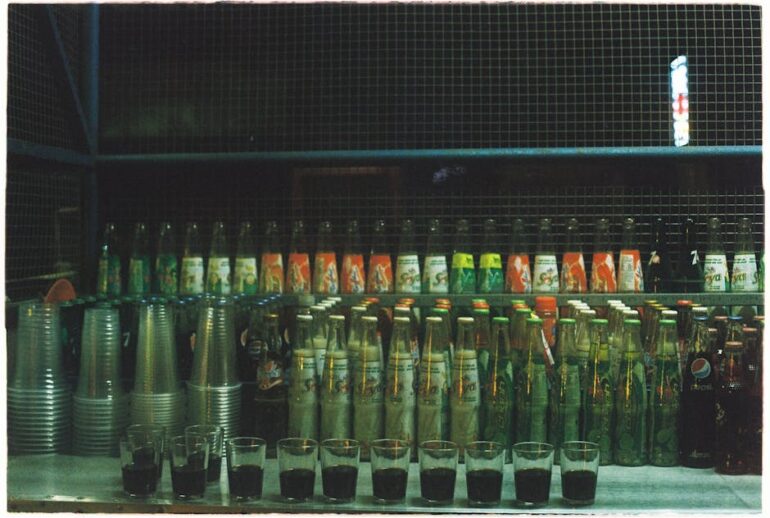Alright, so it’s 2025, and you’re still trying to figure out how to make those display ads really pop on StackAdapt, right? It’s not always straightforward, even if the platform tries to make it seem like a walk in the park. Honestly, getting your display ad specs just right on StackAdapt feels a lot like trying to fit a square peg in a round hole sometimes, but it’s totally worth figuring out. Because when you do, your campaigns can really fly.
What’s interesting is how much things shift, even just year to year. You’d think these ad specs would be set in stone, but nope. They tweak things, add new sizes, maybe even change what they prefer for file types. So, staying on top of it, well, it’s not just a good idea, it’s pretty much essential if you don’t want your campaigns stuck in review limbo. And let’s be real, nobody wants that. That review process can feel like forever, especially when you’re on a tight deadline.
Let’s talk about the big stuff, the core display ad specs you’re gonna bump into most often on StackAdapt. They support a bunch of standard IAB sizes, which is cool because it means your creative team doesn’t have to redesign everything from scratch for every platform. But then there are always those oddball sizes or specific requirements that make you double-check everything.
Standard Display Ad Sizes for StackAdapt in 2025
So, for starters, the bread and butter: those rectangular and square ad units. These are the ones you see pretty much everywhere online. And StackAdapt, they’ve got pretty good coverage for them.
You’re definitely looking at:
300×250 (That medium rectangle, super common)
728×90 (The leaderboard, good for top-of-page visibility)
160×600 (The wide skyscraper, often on the sidebars)
320×50 (Mobile leaderboard, huge for phones)
300×50 (Another mobile option, slightly smaller)
300×600 (Half-page ad, can be really effective if you’ve got the space)
970×250 (Billboard, pretty big, catches the eye)
And honestly, there are more. Sometimes StackAdapt will even tell you they prefer certain sizes based on their publisher network. It’s not like they’re just pulling these out of a hat; they know what performs well across their inventory. My experience tells me that having a good mix of these standard sizes, especially the 300×250 and 728×90, gives you the most reach. If you only upload one size, you’re just leaving opportunities on the table. Think of it like this: if you only wear one pair of shoes, you’re not ready for every occasion, are you?
File Types and Size Limits: Don’t Mess This Up
Okay, this is where things can get a bit sticky. You’ve got these beautiful ads, designed perfectly, but if the file type or size is off, StackAdapt will just spit them back out. It’s frustrating, I know.
For static images, we’re typically talking JPG or PNG. Both are fine, but PNGs are usually better if you have transparency in your design. JPEGs are great for photos because they compress well, but sometimes that compression can make text look a little blurry if you’re not careful. The file size for these? Usually, they want them under 150 KB. That’s pretty standard across most ad platforms, not just StackAdapt. What’s cool is, if your image is slightly over, sometimes their system will try to compress it for you, but I wouldn’t rely on that. Better to get it right from the start.
Then there are animated ads. You know, the ones that move and grab attention a bit more. For these, GIFs are still widely accepted. I’ve found that GIFs can be a bit trickier to keep under the file size limit, especially if the animation is long or has lots of colors. The limit for GIFs is usually around 200 KB to 300 KB, sometimes a bit more depending on the specific ad unit. And loop limits? Most platforms, including StackAdapt, don’t want your GIF looping forever. Three times is usually the maximum. Otherwise, it just becomes annoying for the user, and who wants that?
Now, HTML5 ads. These are a whole different beast. They offer so much more flexibility for animations, interactions, and richer experiences. But man, the specs for HTML5 can be a pain. You usually need to provide a single ZIP file containing all your HTML, CSS, JavaScript, and image assets. And the main HTML file? It needs to reference all those assets correctly within the ZIP. It’s like building a tiny, self-contained website that lives inside an ad slot. The total ZIP file size can vary, but generally, you’re looking at something like 300 KB to 500 KB. And they’ll have specific rules about click tags, which is how they track clicks. It’s not just a simple URL in the code; it has to be a specific variable that StackAdapt’s system can interpret. If you mess that up, your clicks won’t track, and then what’s the point, right?
Honestly, for HTML5, it’s almost always a good idea to use a reputable ad builder tool (like Google Web Designer, if you’re into that sort of thing) because they handle a lot of the technical nuances for you. Trying to code HTML5 ads from scratch unless you’re a proper developer is just asking for trouble, in my humble opinion. It’s too easy to miss something tiny that breaks the whole thing.
Video in Display Ads (Wait, What?)
Okay, this might sound a bit odd, but sometimes you’ll see opportunities for video within display ad units, not just dedicated video inventory. StackAdapt is pretty good at supporting these, though they’re not as common as static or animated GIFs. These are usually for specific sizes, like the larger 300×250 or 728×90, where there’s enough space for a small, auto-playing video loop. File types would typically be MP4 or WebM. They’d be short, silent loops most of the time, just for added visual flair. Think of it like a super-powered GIF. The file size here is gonna be tighter than a full video ad, maybe under 1MB or so, because it’s still being served as part of a display creative.
Landing Page URLs: The Unsung Hero
It might seem obvious, but the landing page URL is a crucial “spec.” Make sure it’s correct, live, and loads quickly. Nothing worse than a great ad leading to a broken page, right? It just wastes your money and makes your brand look bad. And these days, with privacy and user experience being such a big deal, StackAdapt, like most platforms, really pushes for secure URLs (HTTPS). If your landing page isn’t HTTPS, it might even get flagged. It’s 2025; there’s really no excuse for not having a secure site anymore.
Other Nitty-Gritty Details
Border: For white or light-colored creatives, StackAdapt might ask for a 1-pixel border. It’s a tiny thing, but it helps the ad stand out from the page content. If your ad blends into the background, people might just scroll past it without a second thought.
Clear Call to Action (CTA): This isn’t a “spec” in terms of file size, but it’s a design spec that affects performance. Your ad needs to tell people what to do next. “Learn More,” “Shop Now,” “Sign Up.” Simple stuff, but so many people forget to make it prominent.
Brand Logo: Always include your brand’s logo. It builds trust and makes it clear who the ad is from. Sometimes, even if the ad looks fantastic, if there’s no clear branding, it just gets lost in the shuffle.
I believe one of the biggest challenges for marketers is not just knowing these specs, but actually enforcing them with their creative teams. You tell them 150KB, and they send you a 300KB file because “it looks better.” But honestly, a slightly compressed image that actually runs is way better than a perfect one that sits in a pending folder forever. It’s about balance, you know?
What’s interesting is how AI is impacting this. You can use AI tools now to resize images, optimize GIFs, and even generate basic HTML5 ads. While these tools can be a lifesaver for speed, you still need to review the output against StackAdapt’s exact specs. Don’t just assume the AI got it perfect. Sometimes, it makes a file too big, or it messes up the click tag for HTML5. My advice? Always, always double-check. It’s just like when you’re doing your homework – even if you used a calculator, you still check your answer, right?
Why All This Fuss Matters
Look, getting these specs right isn’t just about avoiding rejections. It’s about campaign performance. When your ads load fast, look good, and display properly across different devices and publishers, they just work better. People are more likely to see them, engage with them, and ultimately, click on them. If your ads are slow to load, or they’re pixelated, or they’re cut off, that’s just a waste of your budget. So, paying attention to these little details really pays off in the long run. It’s the groundwork that lets your awesome campaign strategy actually do its thing.
FAQs About StackAdapt Display Ad Specs (2025 Edition)
Q1: What are the most important display ad sizes I should prepare for StackAdapt in 2025?
The big ones you absolutely can’t skip are 300×250 (medium rectangle), 728×90 (leaderboard), and 160×600 (wide skyscraper). For mobile, 320×50 is pretty much a must-have. Having these ensures you get coverage across a wide range of ad placements.
Q2: Can I use animated ads on StackAdapt? What are the common file types and limits?
Yes, you can totally use animated ads! GIFs are the go-to for simple animations. Just make sure your GIF file size is typically under 200KB-300KB and it doesn’t loop more than three times. For more complex animations, HTML5 ads are supported, usually requiring a zipped folder of assets and having a higher file size limit, maybe up to 500KB.
Q3: What’s the maximum file size for static image ads on StackAdapt?
For static images (JPG or PNG), the general rule of thumb is to keep them under 150 KB. If they’re a little over, StackAdapt might try to optimize them for you, but it’s better to get them within the limits before uploading to avoid any delays.
Q4: Do I need to worry about landing page URLs for display ads?
Absolutely. Your landing page URL needs to be correct, live, and load quickly. It’s really important that it’s a secure HTTPS URL, especially now in 2025, otherwise, your ads might get flagged or simply load with security warnings which no one wants.
Q5: Are there any specific design tips related to StackAdapt’s specs?
Besides meeting the size and file limits, think about adding a 1-pixel border to any light-colored ads so they don’t blend into the page. Always include a clear call to action and make sure your brand’s logo is visible. These aren’t strict “specs” but they’re super important for actual ad performance.

















